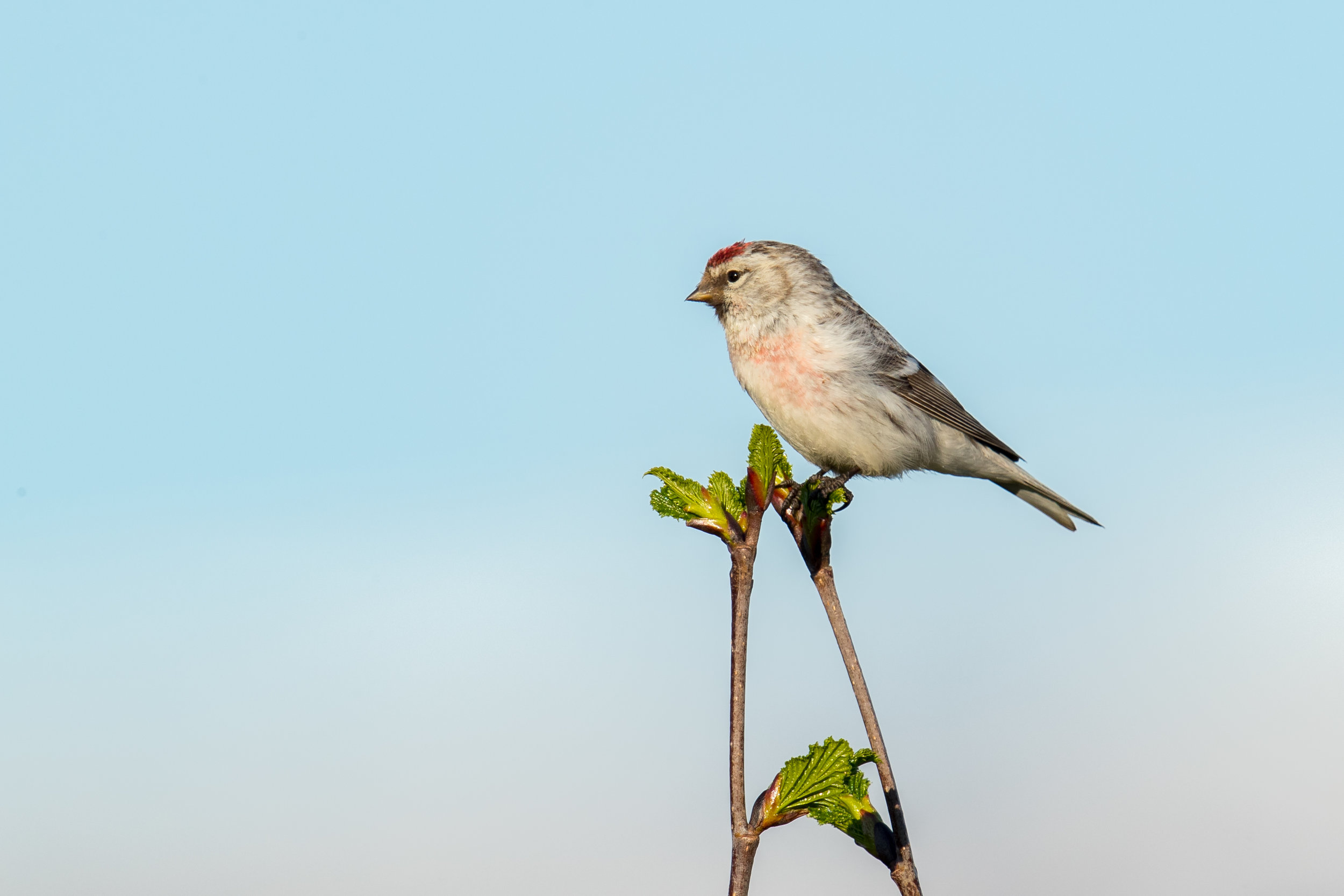Bird of the Month: Common Redpoll
By Andy McCormick
Scientific Name: Acanthis flammea
Length 5.25 in
Wingspan 9 in
Weight 0.46 oz
AOU Band code CORE
The Common Redpoll visits Washington in some winters in flocks ranging in size from a dozen to hundreds of birds. Because its arrival is unpredictable, it is known as one of the irruptive species of northern birds, which, depending on weather conditions and the availability of food sources, will migrate farther south in some winters. Although considered an occasional bird in Washington, they are seen about every two winters, making them a good bird to know.
The reason for their irruption is often caused by failure of seed-crop production among high-latitude trees, especially spruce and birch trees. In Washington they are often seen in alder trees feeding on catkins. They are very acrobatic and will hang at the very end of twigs and forage while holding the catkin steady with one foot (Knox and Lowther).
Redpolls have evolved physically and socially to conserve heat in their arctic environment. Sometimes they will shake seeds loose and then feed on the snow below. Being on the ground allows them to fluff their feathers easier to retain heat. They have also developed an expandable esophagus in which they can store seeds for later regurgitation, husking and swallowing after the bird moves to a more sheltered cover such as in the denser area of conifers (Knox and Lowther).
Nesting typically begins in May with movement north from wintering areas. Migration is limited to the northern hemisphere. The female builds an open cup nest of grass, moss and some twigs and lines it most often with ptarmigan feathers. Usually 4-5 pale green eggs with purplish spots are deposited. Incubation by the female lasts about 10 days and the young leave the nest in another 12 days. The female is fed by the male during incubation (Kaufman).
The genus name Acanthis is from the Greek for thistle finch (Wikipedia).* The species name flammea, from the Latin flamma, a flame, references the red crown. The common name Redpoll is from the Middle English, pol, head.
Common Redpolls are not listed as a species at risk in any Canadian or United States jurisdiction. However, population numbers vary greatly from 200,000 in North America, to 1-2 Million in Europe to between 10-100 Million in Russia. Total population of the species can vary with the abundance of the seed crop so accuracy in counting redpolls is difficult to attain.


